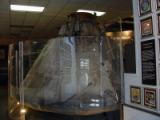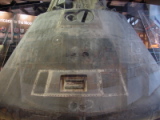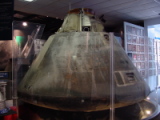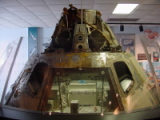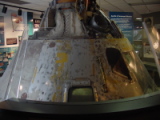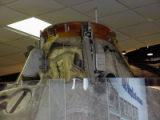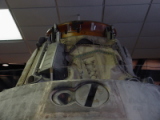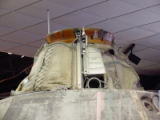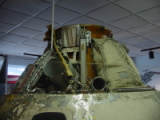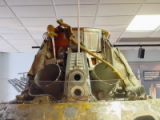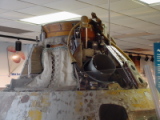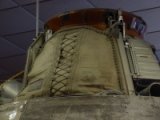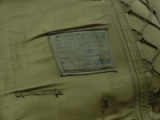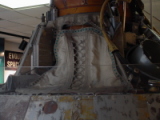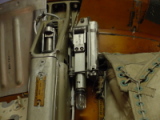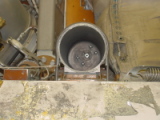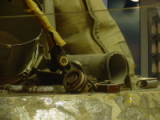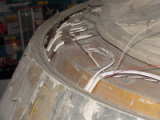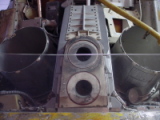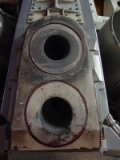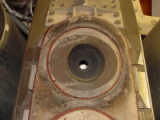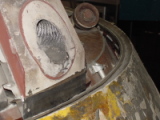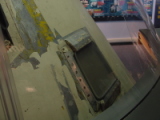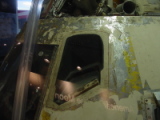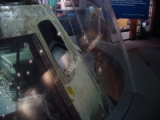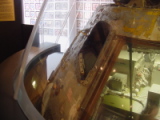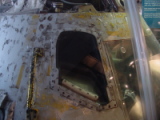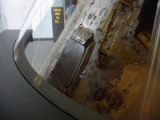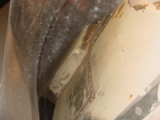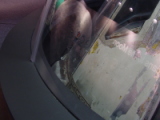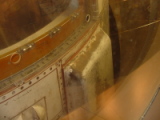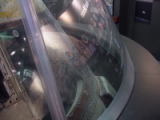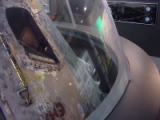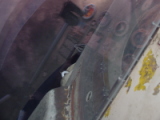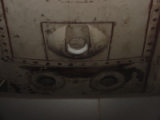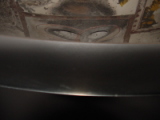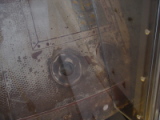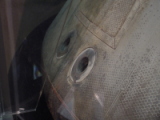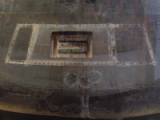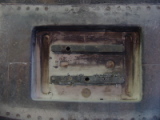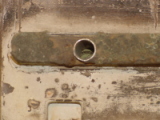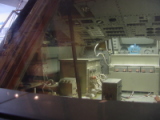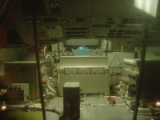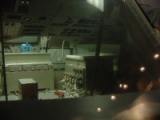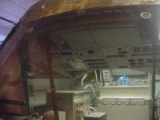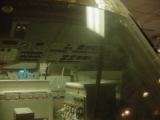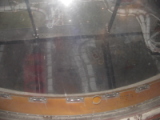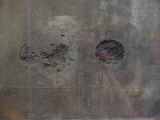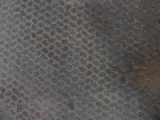Return to Stennis Space Center
Apollo 4
The Apollo 4 mission featured the first, "all-up" launch of a Saturn V. Many were initially opposed to the "all-up" concept, preferring a more methodical Saturn V test program, testing each stage individually in a "building block" approach. Nonetheless, the Saturn V performed flawlessly.
Apollo 4 launched on November 9, 1967, about nine months after the Apollo 1 fire. The fire led NASA to eliminate the manned Block I Command Module missions, but of course it still had several flight-ready CSMs on hand, and NASA used two of them them for unmanned missions. However, the Block I Apollo 4 CM (CM-017) was modified to test certain Block II CM features: Apollo 4 was fitted with a simulated Block II umbilical in addition to the active Block I umbilical. It also had a Block II heat shield (which was designed to withstand temperatures from a lunar return flight, whereas the Block I heat shield was rated only for earth orbit reentries). Apollo 4 was fitted with EVA handles, albeit only two, rather than the five handles present on a Block II spacecraft. While Apollo 4 did not have a Block II hatch (Apollo 6 was the first spacecraft to launch with a Block II hatch), the Apollo 4 hatch did have a test panel to help qualify the Block II hatch seal.
As an unmanned mission, the Command Module lacked crew couches, waste management items, and some of the displays and controls. A mission control programmer was installed to control the spacecraft in the absence of a crew.
Refer to the Apollo 4 Press Kit for information about the objectives of the mission and "Apollo 4 Spacecraft Performance" for how well the spacecraft met those objectives. Information on the Saturn V's performance is located in Saturn V, AS-501 Flight Evaluation, MPR-SAT-FE-68-1 [alternate link].
I visited Apollo 4 back when Stennis had an on-site visitor center. The center has since moved the visitor center to the nearby Infinity Science Center, moving many of its artifacts there circa 2012. Apollo 4, however, remained at Stennis until October 29, 2017, when it joined the other former Stennis artifacts at Infinity.
Apollo 4 was integrated into the Stennis gallery's structure, with the front of the spacecraft partially blocked by a raised platform on which an exhibit gallery is constructed. This, unfortunately, blocks most of one of the Block I Command Module's most interesting features, the Block I umbilical.
The spacecraft is also displayed with its parachute bags, including one which has been repacked. This allows comparison between the Block I parachutes on Apollo 4 and the Block II parachute system on Apollo 14.

